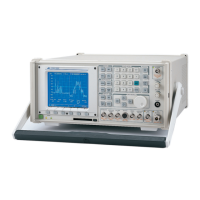6-40
SECTION 6
OPTIONS
6-12-12 LTR RADIO HANDSHAKE TEST
This test verifies the COM-120C is able to link with the Mobile Radio and a proper
encode/decode sequence is performed. Perform these additional tests simultaneously:
RF Power, RF Error, Voice FM Deviation, Data FM Deviation, Distortion and AF
Frequency Measurements.
o Set Deviation Meter (16) to measure Voice
or Data FM Deviation as needed.
o Set Group (24) for ID Code of Mobile
Radio.
o Set Status (25) to
FREE
.
o Set Home (27) to Mobile Radio Home
Repeater Number.
o Set Area (28) for Mobile Radio Area switch
setting.
o Connect Mobile Radio RF Output to
connector specified by Input (20).
o Connect Mobile Radio RF Input to connector
specified by Output (6).
o Key Mobile Radio. Verify
CONNECT-DSP
or
CONNECT-RIC
is displayed for Radio Status
(31).
o Verify Group (30) matches Group (24).
o Verify Home (33) and In Use (29) match Home (27).
o Verify Area (34) matches Area (28).
o Verify Free (32) displays
31
.
o Unkey Mobile Radio. Verify Release is displayed for Radio Status (31). Verify In
Use (29) displays
31
.
00607237
Group
GotoArea
Home
Free
151
9
0
5
9 Status CONT
23
24
2526
27
28
00607238
Group
In UseArea
Home
Free
151
9
0
5
31 CONNECT-DSP
29
30
32
33
34
31

